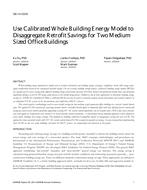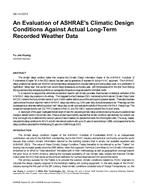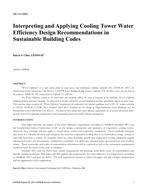-
-
Available Formats
- Options
- Availability
- Priced From ( in USD )
-
Available Formats
-
- Immediate download
-
$16.00Members pay $12.00
- Add to Cart
Customers Who Bought This Also Bought
-

SE-14-C039 -- Use Calibrated Whole Building Energy Model ...
Priced From $16.00 -

SE-14-C074 -- An Evaluation of ASHRAE's Climatic Design C...
Priced From $16.00 -

SE-14-C003 -- Economic Applicability Evaluation of Heat P...
Priced From $16.00 -

SE-14-C080 -- Interpreting and Applying Cooling Tower Wat...
Priced From $16.00
About This Item
Full Description
Airflow in patient corridors was found to be a contributing factor in several cases of nosocomial transmission of airborne disease. As a result, an actual hospital was used to observe the aerodynamic behavior of synthetic respiratory aerosols in two corridors of a general patient ward placed under neutral (non-directional) and negative (directional) airflow. Under the negative mode, aerosols 1.0-3.0 microm remained above background concentrations more than twice the distance (28.4m, 93.2ft) from the injection point when compared to the neutral mode (13.2m, 43.3ft), suggesting that dispersion may be a significant transport mechanism for 1.0 microm and 3.0 microm particles. In contrast, 0.5μm aerosols remained above background concentrations to distances exceeding 31.5m (103.3ft) with comparatively less regard to airflow mode, suggesting that diffusion may be a significant transport mechanism for 0.5μm particles. As a result, data indicate that directional airflow within a patient corridor may have a greater effect on the movement of 1.0μm and 3.0μm respiratory particles (e.g. bacteria and fungi) compared to 0.5μm particles (e.g. viral droplet nuclei).





